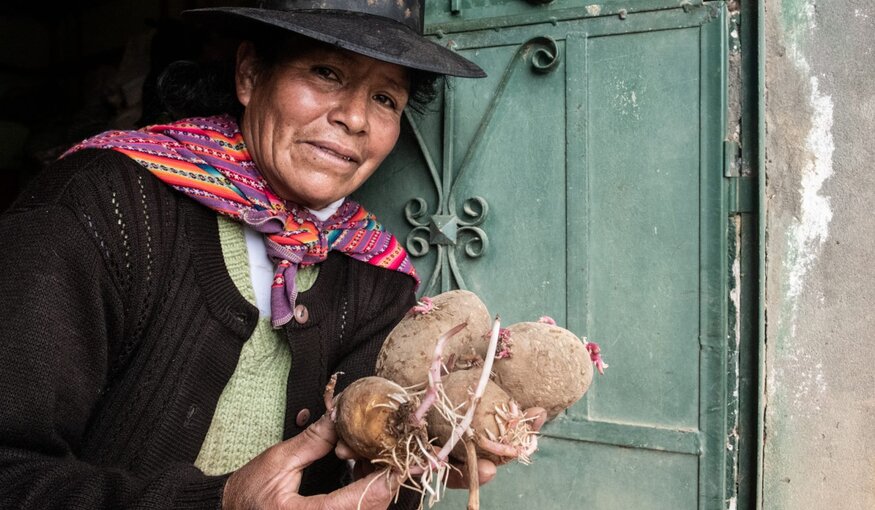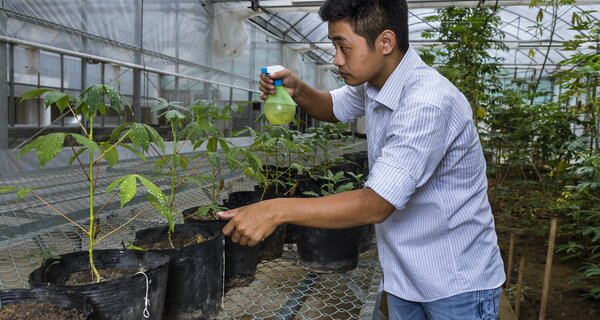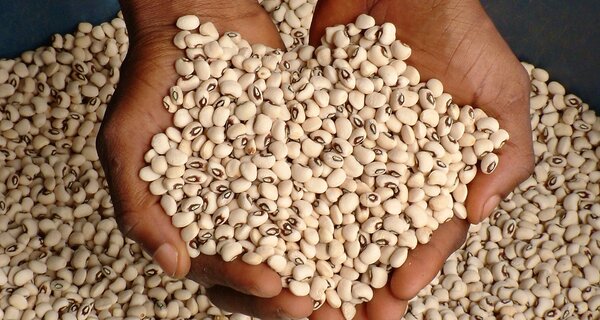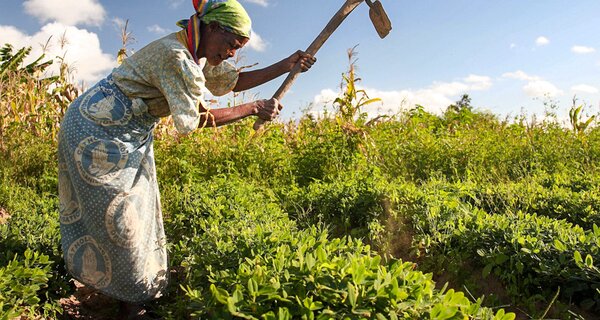Revival and Survival of Repatriated Potato Landraces in the Andes

Maryluz Contreras of Colpar in central Peru showing the potatoes she will use in her next planting. Photo: Michael Major for Crop Trust
21 March 2023
Take home messages
-
Potato landraces collected in farmers’ fields are being “repatriated” back to the farmers.
-
A study was conducted to determine how long Andean farmers continue to use repatriated landraces after receiving them from the International Potato Center.
-
A third of all participating farmers still conserve repatriated landraces and value their nutritional and cultural benefits.
Many Andean farmers are still conserving repatriated potatoes years after receiving them, according to a recent study. The study is the first to assess how long Andean farmers continue to plant repatriated potato landraces.
“Potato landraces are traditional varieties that are adapted to local conditions and cultural practices,” said Sophia Lüttringhaus, an agricultural economist who led the study as part of her Genebank Impacts Fellowship under the CGIAR-Crop Trust Genebank Platform. “A great diversity of potato landraces persists in farmers’ fields, but a lot of this diversity has been lost in many places.”
Local communities and the genebank of the International Potato Center (CIP) have partnered to supply clean seed potatoes to farmers so they could re-establish some of these landraces in their fields.
“Repatriation is the process of returning native germplasm back to its place of origin,” explained Sophia. The CIP genebank formalized a repatriation program of potato landraces, and between 1997 and 2020 it distributed 14,950 samples to 135 communities in Peru.
But until now, scientists didn’t know what happened to those repatriated landraces after farmers received the clean seed, and whether CIP’s repatriation program induced any changes or benefited the farmers.
The study addressed this research gap by analyzing CIP’s genebank data on the repatriated landraces, conducting interviews with experts of CIP’s repatriation program, and surveying 301 households and community leaders who had participated in the repatriation program.
“Our interviews indicate that overall, a third of all participating farmers still conserve the repatriated landraces,” said Sophia. “But 56% of households abandoned them by the fourth year after receiving it.”
Sophia and her colleagues identified the kinds of families who maintain the landraces for longer periods. Household heads who are women or over 60 years of age are more likely to plant the landraces for longer. Further, those households with a higher level of education and more food insecurity kept the landraces for longer periods. On the contrary, household heads who are men or under 29 years of age are more likely to abandon repatriated landraces earlier.
Most farmers perceived nutritional and cultural benefits from growing repatriated landraces. For example, farmers reported that the repatriation program increased their food security and diversity of potato tastes and textures. It also created a healthier feeling, and a perceived union of traditional and scientific knowledge. Further, the repatriated potatoes enable the farmers to contribute to conserving potato diversity and maintaining traditions.
“Most farmers confirmed that the main objectives of the repatriation program are being fulfilled, that is to restore lost landraces, increase food security and conserve landrace diversity,” said Sophia.
Based on the data collected, Sophia and her colleagues make some recommendations about the repatriation program. First, the repatriation activities should be institutionalized as a program within the genebank so its visibility can be better enhanced and documented. Second, a follow-up exchange between the receiving farmers and CIP repatriation staff would sustain the benefits of the program.
###
Sophia Lüttringhaus is an interdisciplinary expert in agricultural economics and international relations with international work experience in agricultural research for development and scientific consulting. Her work focuses on climate change adaptation, agrobiodiversity, plant genetic resources, crop production, food security and soil protection. She works as a research analyst at HFFA Research, a think tank based in Berlin (Germany). While working on her PhD at the Humboldt University Berlin, she conducted and published research on the economic effects of plant breeding, and the conservation of plant genetic resources. Sophia was one of the Genebank Impacts Fellows in 2020 and conducted research with CIP and Crop Trust mentors.
The Genebank Impacts Fellowship program was established in 2018 to provide an opportunity for early career professionals to gain practice-based experience in evaluating the impacts of the international genebanks. This experience is complemented by mentorship from impact assessment specialists and plant genetic resources scientists in the global system for ex situ conservation.
Categories: Genebank Platform, Potato
The CGIAR Genebank Platform
This article was originally published by the CGIAR Genebank Platform, a project which ran from 2017 to the end of 2021. It enabled CGIAR Research Centers to fulfill their legal obligation to conserve and make available 750,000 seed samples of crops and trees on behalf of the global community under the International Treaty on Plant Genetic Resources for Food and Agriculture. The Platform supported day-to-day genebank operations, and activities to improve efficiency, enhance use and ensure compliance with international policy. This work was supported jointly by donor contributions to the CGIAR Fund and the Crop Trust Endowment Fund.




